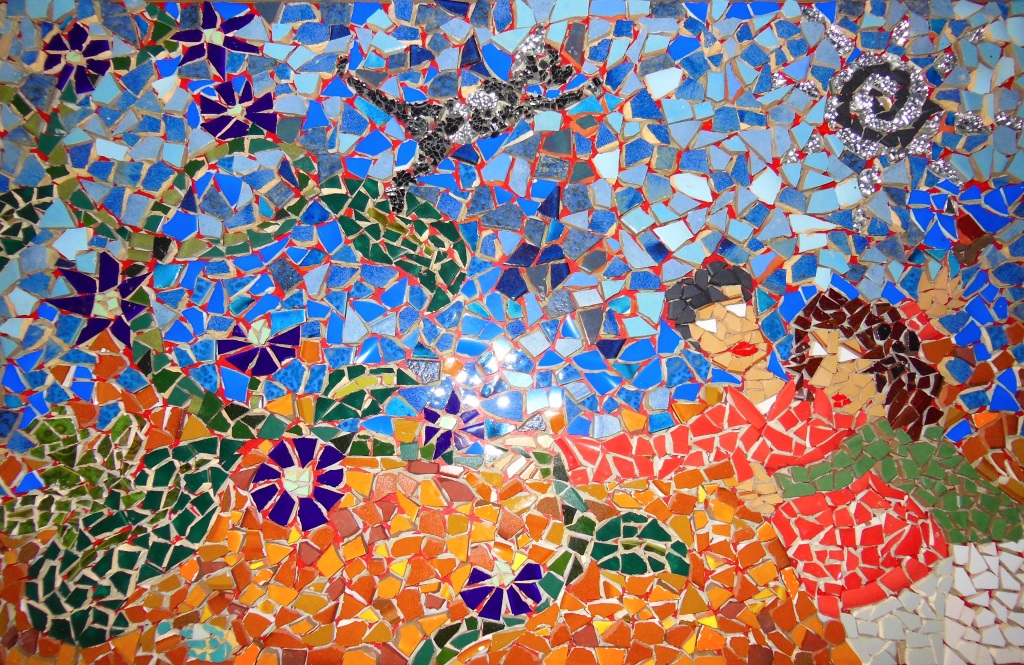
It was a beautiful afternoon when we stepped off the train from Copenhagen, arriving in the tiny village of Knabstrup. We asked several of the villagers for directions to the place we were looking to stay: ‘Makvärket‘, the mysterious, abandoned factory known to house an ardent group of artists, philosophers, and travellers. The Knabstrup villagers kept pointing us further up a winding road. “It’s not too far,” they said, “the factory is at the end of the road.” At last we could see the cylindrical, brick chimney rising up above the trees and towering over everything. A mysterious factory on top of a hill, overlooking the village below… Sounds like a Frankenstein movie.
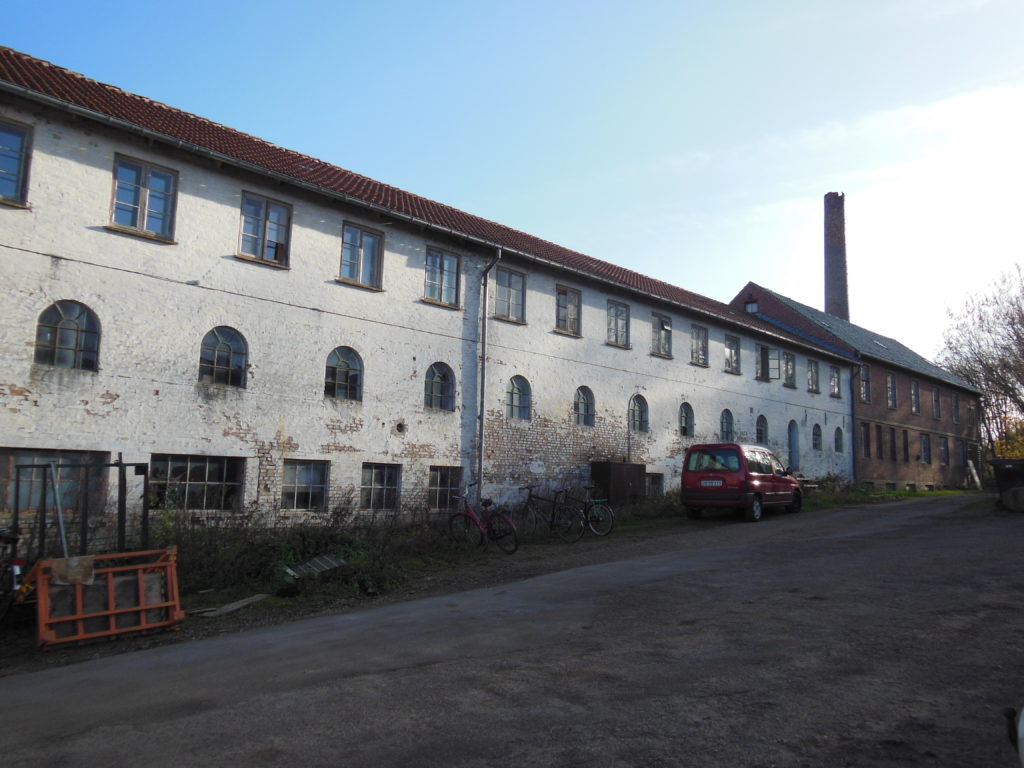
We approached the great oak door and knocked thrice.
No answer.
We entered the building, walked up a tiny stairway, and entered through another door. Many eyes met ours as we cautiously entered the main living area. It was a large, cozy looking room with many unique paintings on the wall and a small kitchen in the back. There was a clay oven in the shape of a dragon, it’s serpentine body winding along one of the walls. At a long table sat many young people eating lunch. They greeted us with smiles and handshakes and offered us food. Happily unloading our packs from our backs we enjoyed our meal and began to get to know some very interesting and wonderful people, some that were travellers like us, and others just living an alternative lifestyle right there in the factory.

We were both given a tour of the building straight after lunch, but it wasn’t enough. The factory was enormous and held many rooms, some more difficult to find than others, all filled with an assortment of random objects. One space was filled with clothing, another with computer parts, another with bicycles, and another with piles of furniture. Several rooms had collections of moulds the original factory had used to create ceramic pots, cups, plates, everything. Some areas held machinery, tools, and construction materials. There was an art space the members of Makvärket had created, as well as a “circus hall” used to hold events and to rent out to the public. On the fourth floor of the factory there was a set of stairs that led up to a terrace overlooking the countryside. To one side I could see the old kiln that was once used by the factory, a round, brick mound with trees and brush slowly overtaking it. As I stood up there admiring the view I imagined myself as a sentry on top of a fortress, keeping an eye out for invaders.
At night when everything was pitch black I would wander through the factory with my flashlight and get lost for an hour, making many new discoveries along the way. The spirits of the place, Michelle and Ghostface (cats), would follow my every footstep.
While I stayed at Makvärket, for two weeks, I was able to participate in several small construction projects, such as tearing down an old roof and loading up construction materials for transport. Ashleigh helped with organising the new kitchen and attempted to straighten out the enormous Free Shop, a store of clothes, shoes, games and everything one could possibly need. Other duties included chopping wood, cleaning, and cooking for what could be up to twenty people (at least in the winter, in the summer it could be more). In the evenings most everyone would be sitting in the living area next to the roaring dragon furnace to keep comfortably warm. Sometimes, on clear nights, we would have a bonfire up on the terrace and look at the stars.
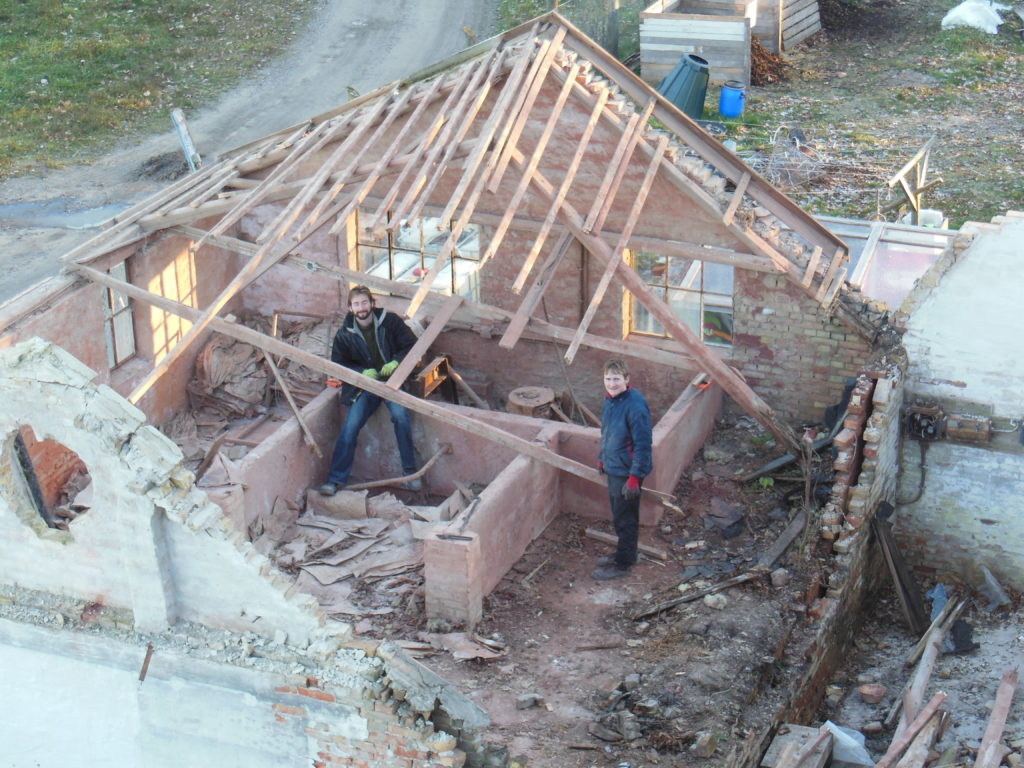
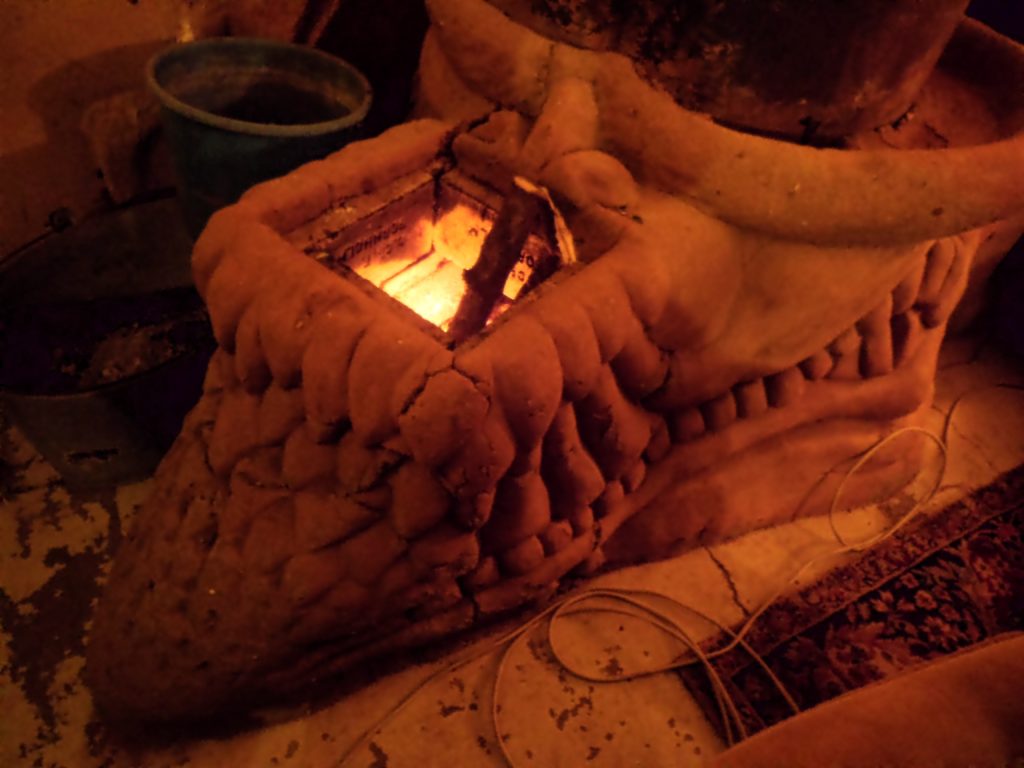
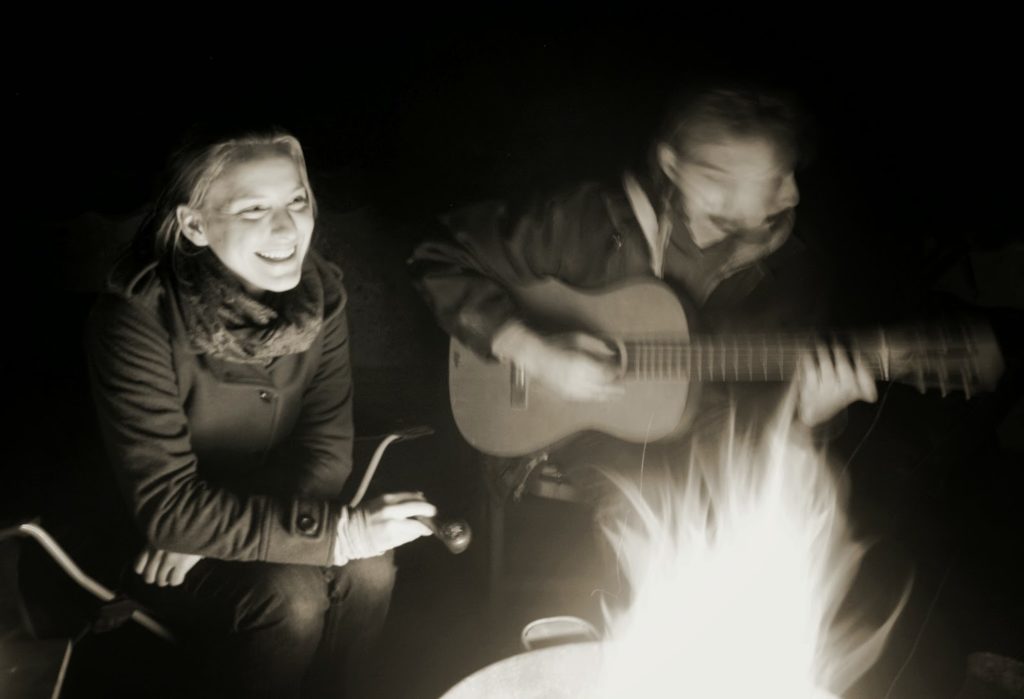
Dumpster diving is something that would occur at least once a week. Around 10:00 pm we would pile into a truck and drive off to some of the nearby towns, looking behind supermarkets and grocery stores for perfectly edible food that had been thrown out. We would find fresh fruit, bread, yogurt, milk, eggs, vegetables, chocolate, and sometimes even beer that were all still fresh and good to eat. We would return from our nightly excursion to Makvärket at around 1:00 am, and the next day each package and piece of food would be thoroughly inspected and cleaned before eating. It may sound gross, I know, but there was always plenty of food for twenty or more, usually nothing extra needed to be bought, and the meals were always excellent! It is weird to think that so many people could be well-fed off of what others throw away.
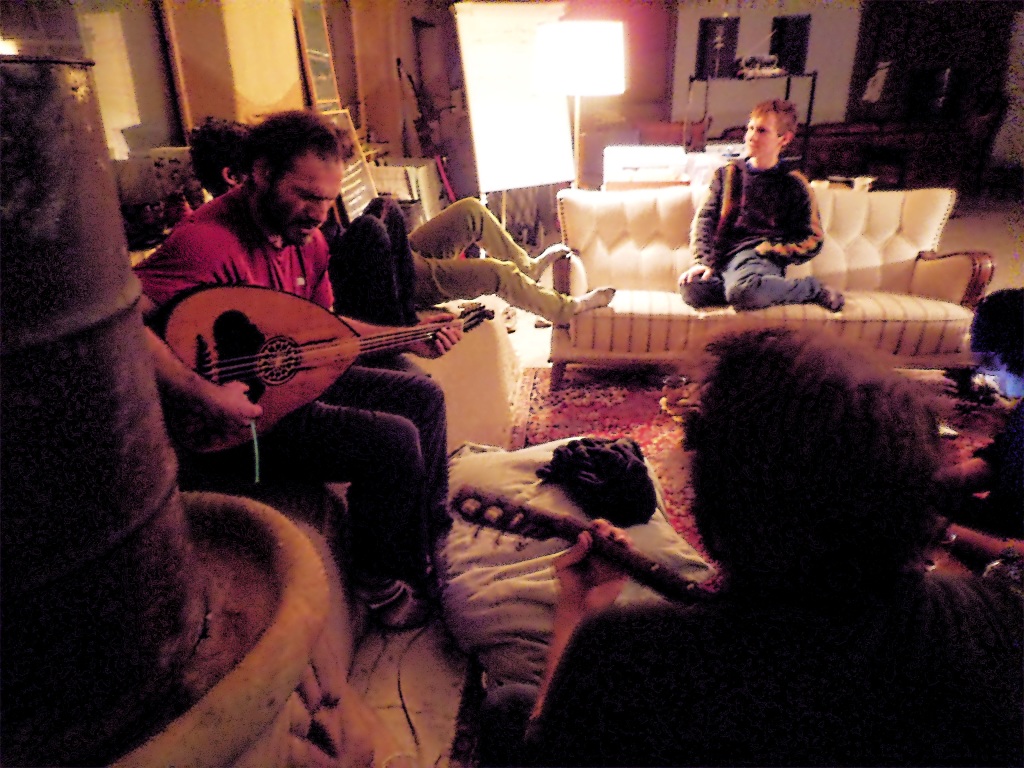
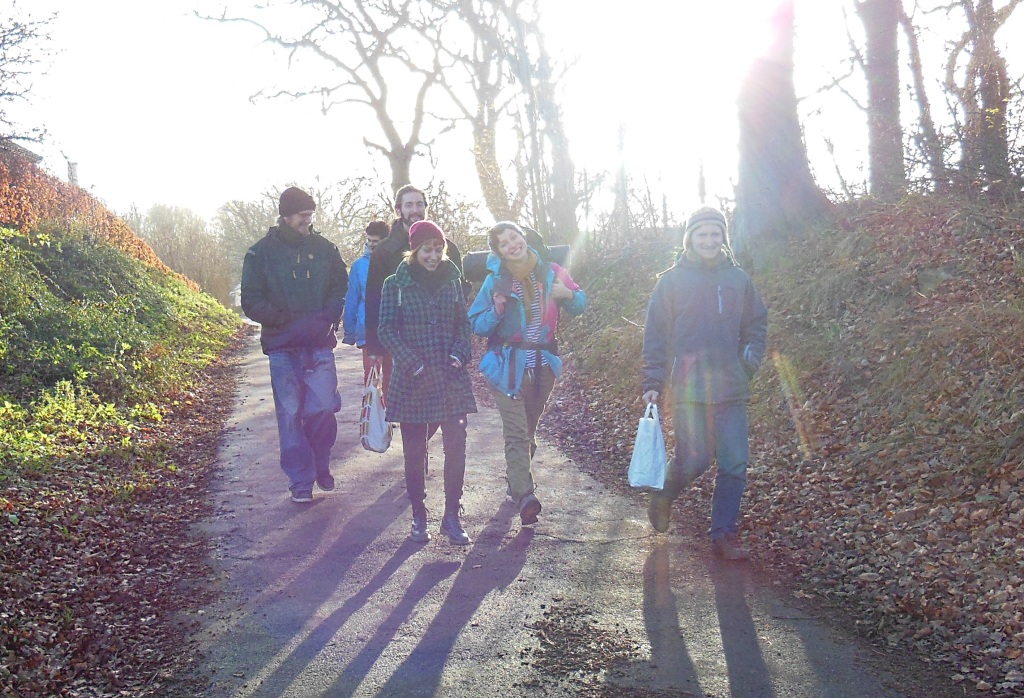
Living in Makvärket for two weeks was an incredible learning experience for us. We were surrounded by people from all over Europe and we learned a lot about their culture, traditions, and customs. There was Edvinas from Lithuania, Nele and Katrin from Germany, Minas from Greece, Eitan from Israel, Teo from Romania, Phillipo from Italy, and so many others from Denmark and around the world. And of course, there was Ashleigh and I all the way from Canada, just to shake things up a bit. We were all travellers who had found this alternative society that somehow functioned very well as a happy community, and decided to stay a while. I most certainly would have liked to stay longer. Perhaps one day we will return to see how much work has been done on the factory and if it is still the same place that we left.








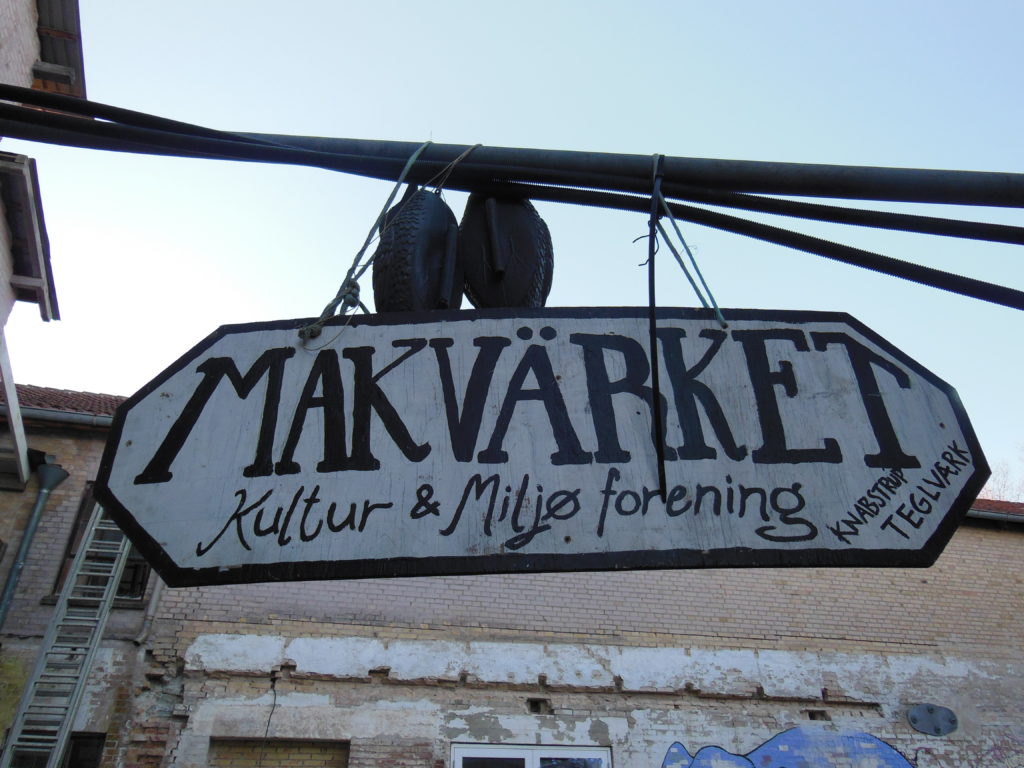
This sounds amazing! What an awesome experience 🙂